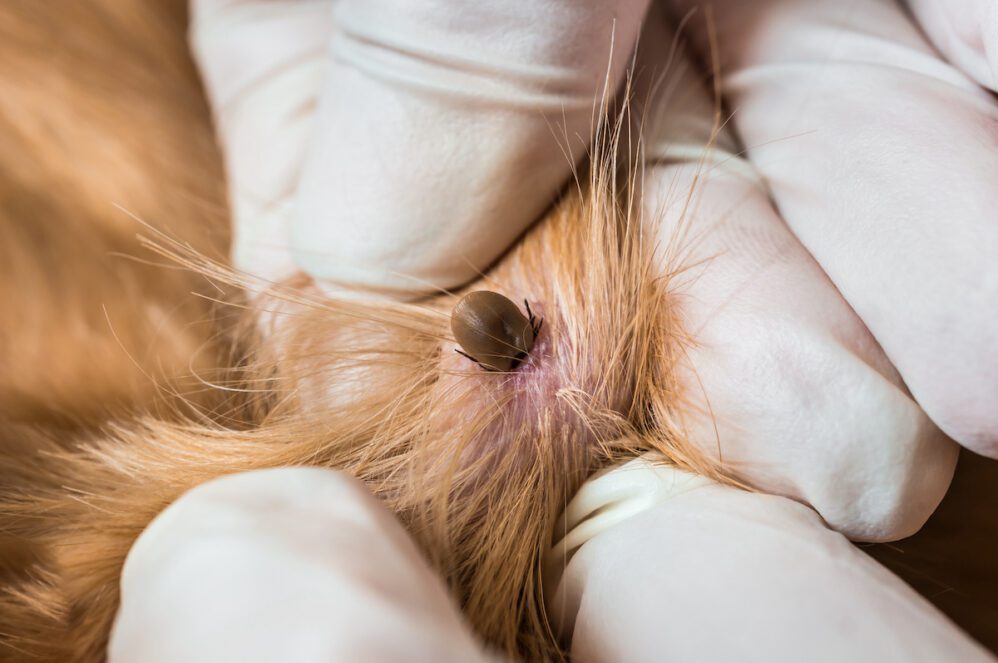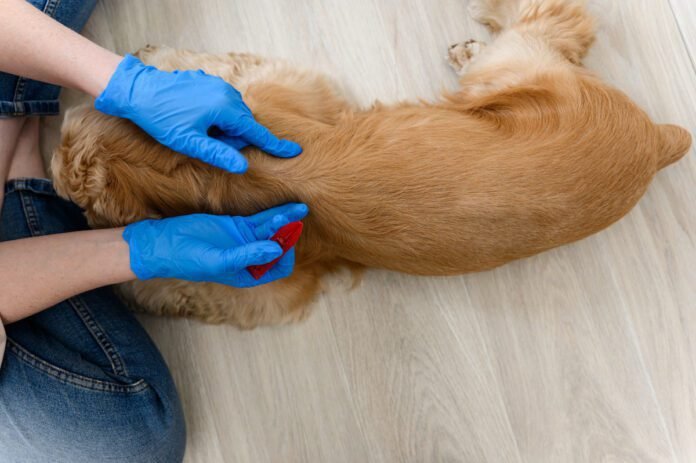Last Updated on December 7, 2023 by Dogs Vets
Flea Prevention 101: Year-Round Strategies For A Flea-Free Pup
As a pet parent, keeping your furry friend healthy and happy is a top priority. One key aspect of their well-being is flea prevention. Fleas aren’t just a summer nuisance; they’re a year-round threat that can cause discomfort and health issues for your pup.
Here are some effective strategies to keep your dog flea-free all year long:
-
Know About The Flea Life Cycle And Habits
First, it’s crucial to understand your adversary. Fleas, despite their tiny size, wreak significant havoc. Their life cycle–from egg to larva, pupa, and adult–can vary significantly based on environmental conditions.
Under ideal conditions, such as warm and humid environments, this cycle can be as short as three weeks.
However, the life cycle can extend in less ideal conditions, sometimes taking several months to complete. This variability means fleas can be a persistent problem, which is critical to effective year-round prevention.
2. Choose The Right Flea Prevention Products
Choosing the right flea prevention product is crucial, regardless of why your dog got fleas. There are various options you can choose from, but not all products are created equal, and their safety and effectiveness can vary significantly. Here are your options:
- Topical Treatments: For most pet owners, topical treatments are a go-to. These products are applied directly to your dog’s skin, usually at the back of the neck. They release chemicals to repel or kill fleas and are noted for their ease of use and effectiveness. Unlike other treatments, they typically require monthly reapplication.
- Oral Medications: Pills or chewables can be oral flea preventatives for dogs that work internally to stop flea infestations. It is ideal for dogs that swim or bathe often, but they don’t wash off like topical treatments. Some also treat internal parasites like heartworms. However, picky eaters or dogs with ingredient sensitivities need a suitable option.
- Flea Collars: Flea collars offer a lasting, convenient solution for dog flea control. They release chemicals to spread over the dog’s fur, some lasting several months. Choose a non-toxic, comfortable collar, but be cautious if your dog has sensitive skin, monitoring for any discomfort.
- Flea Shampoos: These are effective for immediate relief, killing fleas on contact, but they are not a long-term preventive solution. They are best used in initial treatment when your dog is already infested with fleas.
- Flea Sprays: These can be used on dogs and their surroundings, which help kill and repel fleas and can be useful for spot treatments. While these products provide immediate benefits, they should be complemented with other preventive measures for lasting protection against fleas.
- Natural And Alternative Remedies: Consider alternatives like essential oils and diatomaceous earth for a more natural approach. However, it’s important to proceed cautiously, as not all natural remedies are safe or effective for all dogs.
Consider your dog’s age, health, and lifestyle when selecting a flea prevention product. For instance, a puppy may need a different type of flea control than an adult dog.

It’s also best to consult your vet before starting any new flea prevention regimen to ensure you choose a safe and effective option tailored to your dog’s specific needs.
3. Maintain A Clean Environment
Your home environment is a critical battleground in the war against fleas. Therefore, regular cleaning is a fundamental strategy in flea prevention. Here’s how to effectively maintain a flea-free environment:
- Vacuum Regularly: Vacuum carpets, rugs, and any upholstered furniture. Fleas can lay eggs in these soft fabrics, so frequent vacuuming can help eliminate them. Pay special attention to areas where your dog spends a lot of time.
- Wash Dog Bedding Frequently: Your dog’s bedding is a prime spot for fleas to live and lay eggs. Wash their bedding in hot water weekly to kill any fleas or eggs.
- Clean Your Dog’s Favorite Spots: Besides their bedding, dogs often have favorite spots around the house. These areas might include a favorite corner, a spot on the couch, or a sunny patch on the floor. Make sure to clean these areas regularly.
A clean environment inside and out is not just pleasant to live in. It’s also a crucial line of defense in keeping your dog healthy and flea-free.
4. Prioritize Regular Grooming
Grooming is an essential aspect of maintaining your dog’s overall skin health and acts as a frontline defense against fleas. Regular grooming does more than keep your dog’s coat shiny; it plays a critical role in maintaining healthy skin, which is less appealing to fleas.
During grooming, you get the opportunity to inspect your dog’s skin and fur closely for signs of fleas and flea dirt, making it easier to catch any infestation early.
Additionally, grooming reinforces the bond between you and your dog, turning it into a comforting routine rather than a mere chore.
By keeping your dog well-groomed, you help prevent skin problems that can be aggravated by flea bites, ensuring that your dog remains healthy, comfortable, and less susceptible to flea infestations.
5. Spot Early Signs Of Fleas
Vigilance for signs of fleas is crucial in maintaining a year-round prevention strategy. Here are key indicators to watch for:
- Excessive Scratching Or Biting: One of the earliest signs of a flea problem is your dog scratching or biting their skin more than usual. Flea bites are irritating, causing discomfort and prompting this behavior.
- Red Patches Or Bumps On Skin: Check your dog’s skin for red patches, bumps, or signs of irritation. These are frequently found on the tail’s belly, lower back, or base.
- Flea Dirt: Look for tiny black specks in your dog’s fur or bedding. This “flea dirt” is actually flea feces and a clear indication of their presence.
- Visible Fleas: Though small, adult fleas can be seen moving quickly through your dog’s fur. A flea comb can help detect and remove them.
Early detection and immediate action are essential. If you notice any of these signs, it’s time to treat your dog and your home to prevent a full-blown infestation.
6. Stay Informed And Be Proactive
It’s essential to keep abreast of the latest information on flea control. Advances in veterinary medicine and pest control are constantly occurring, offering new and improved solutions.
Regular check-ups with your vet are also crucial for dog care. These visits are the perfect opportunity to discuss flea prevention concerns and stay ahead of potential problems.
Your vet can offer tailored advice based on the latest practices and catch any issues early on. Being proactive ensures that your pup remains healthy and comfortable throughout the year.
Conclusion
Flea prevention is a year-round commitment. By understanding fleas, choosing the right products, maintaining a clean environment, grooming regularly, detecting early signs, and staying informed, you can keep your pup flea-free.
Remember, a happy dog is a flea-free dog, and that’s a win for everyone!
Fact Check
We strive to provide the latest valuable information for pet lovers with accuracy and fairness. If you would like to add to this post or advertise with us, don’t hesitate to reach us. If you see something that doesn’t look right, contact us!

















